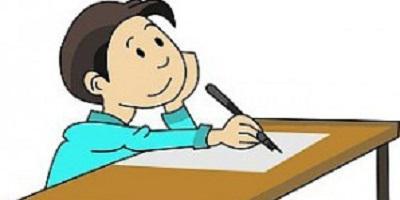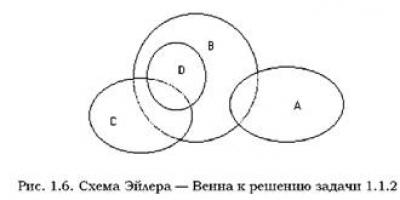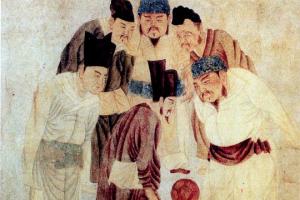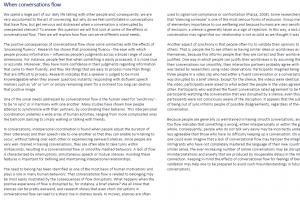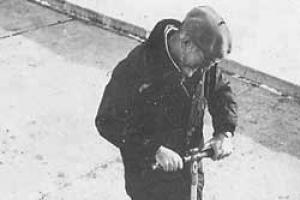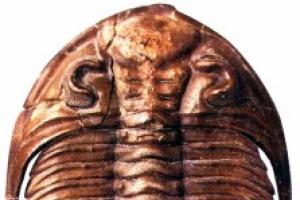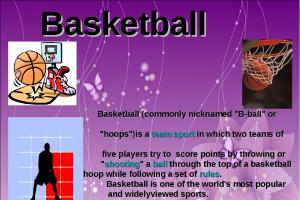In the Russian language, the initial form of a word is of great importance. Many of its grammatical forms depend on this. The noun is no exception.
What is the initial form of the noun?
To find out the initial form of a noun, you need to put it in the singular. Let's look at the rule using words from a sentence as an example:
In the series of symbols, Blok does not avoid purely allegorical images, long-frozen symbols, already linguistic metaphors.
This determines the initial form of the noun. It will help us in spelling case endings.
Endings -e and -i in 1st declension
The spelling named in the subtitle is associated with the need to determine the initial form. The fact is that it depends on this in which cases the ending -e is written on nouns, and when the ending -i is written.
The initial form of first declension nouns ends in -а, -я. Remember to ask the question: “What?” Here are some examples:
- wife;
- Earth;
- foliage;
- Apple tree;
- purity;
- white;
- running around.
The endings -e and -i are written in these words. The choice is determined according to the following scheme:
R. p. (who? what?) - I.
D. p. (to what? to whom?) - E.
Etc. p. (about whom? about what?) - E.
Here are some examples:
Practical task No. 1
What letters would you use instead of dots?

Answers: 1) -e, 2) -e, 3) -e, 4) -e, 5) -e, 6) -e, 7) -i.
Endings -e in nouns of the 2nd declension
The initial second declension in the neuter gender ends in -o/-e, and in the masculine gender it ends in a consonant. For example:
- window;
- village;
- field;
- Sun;
- case;
- table;
- pillar;
- comrade;
- pencil.
If you have this initial form of a noun in front of you, then the word never has an ending -i:
- R. p. (who? what?) - A.
- D. p. (to what? to whom?) - U.
- Etc. p. (about whom? about what?) - E.
As you can see, this spelling applies only to the prepositional case form:
- I told everyone about my friend, who had not left the house for a whole year.
- And there are spots in the sun.
Practical task No. 2
What endings are written in words with spaces?

- The agreement... set out in detail the procedure for using public places.
- In the unfamiliar officer... the old woman recognized her son.
- Suddenly they remembered the paramedic who lived nearby and sent for him.
- Selivanov told the boss about this engineer... and his project..., and he agreed to meet with him.
- Everyone worked and didn’t even think about the director... and he still didn’t come.
- On vacation... everyone had a good rest, now it’s time to get to work with renewed vigor.
- On the pass... there was someone else's photo.
Answer: all words end in -e.
Case endings of nouns of the 3rd declension
If the noun is feminine in the initial form, that is, in the I. p. singular. h. ends with this means that it is of the third declension. Examples of such words:
- notebook;
- bed;
- mother;
- daughter;
- bake;
- lie;
- whim;
- square.
If the initial form of the noun is exactly this, then these words never have the ending -e:
- R. p. (who? what?) - I.
- D. p. (to what? to whom?) - I.
- Etc. p. (about whom? about what?) - I.
Here are some examples:

- The geranium flowers were bright red on the windows.
- In the distance towered the towers of an impregnable citadel.
- Everyone on the ship was already dreaming of the earth's firmament.
- She mixed regular thread into the wool for strength.
Practical task No. 3
Let’s take a task that every third grader should be able to cope with, since the 3rd grade is introduced to the topic “Initial form of a noun” as part of the school curriculum.
Indicate sentences that contain words ending in -i:
- In class we read Chukovsky's poem about cockroaches...
- Yesterday our whole family went to visit our grandparents...
- I read in books... about space...
- My uncle... has a model of the ship.
- Under the tree grew a large mushroom under a layer of pine needles...
- The bright image of the teacher remained in the memory of his students for a long time.
- In June, seed pods form on the poplar, which then burst, and the seeds, along with the fluff, scatter throughout the area... .
- In 1914, when the war began, Nastasya Vasilievna bequeathed to her daughter... all her untold wealth and went to the front as a nurse.
- The girl in a light dress... made of chintz fit surprisingly harmoniously into this picture of light, warmth and greenery.
- The huge puddle reflected the starry sky and the curly crowns of trees, their tops turned down.
Words starting with -iy, -iya, -ie
There are also words whose initial form ends in -iy, -iya, -ie:
- sanatorium;
- moratorium;
- dispensary;
- lecture;
- army;
- section;
- work;
- mixing;
- ugliness.
Such words in the genitive, dative, and prepositional cases have the ending -i. For example:

- Polaris is the brightest star in its constellation.
- The father of the family once studied at the seminary a long time ago.
- Maria Ivanovna had two sons and four daughters.
- Vitalia was wearing an old coarse knitted sweater.
- Mother often thought about Artemy and waited for him.
- The mother's heart was only in harmony with the world when all her children gathered in the house.
- My brother serves in the army.
As can be seen from the examples, in such cases we see a combination of letters -ii at the end of words. Only the last one is the end.
Dictation
Write down the text from dictation, put the nouns in the initial form.

How beautiful the autumn forest is! The trees are dressed up like in a fairy tale... Only the spruce in its needles... frowns and throws cones from its top... . The leaves of birch trees are yellow, transparent, and jagged. Aspen trees have orange laces, very beautiful. The most beautiful outfit for maple...: red, patterned, unusual. Because of it, you won’t immediately see clusters of mountain ash... .
In the clearings... on the paths... there are hare gatherings. The hares also have new clothes: white streaks of gray have appeared on their gray fur coat. And the protein... there’s no time for updates, it’s all in work... How many more cones on the branch! And mushrooms on the ground...! And the berries on the bush...! No, she will rest in the winter in the warmth... yes, well-fed... .
The whole forest stands in a special fascination in autumn... .
So, you have learned which form is the initial form of nouns, and have learned to use this knowledge when choosing the spelling “E and I in the endings of nouns.” You see how easy and simple it is. But the ability to determine the original grammatical form is important not only when studying the topic “Noun”: for example, it is also important for studying grammar, but this is a topic for another conversation.
Noun - This is the most essential part of speech; in grammar it is considered frequently occurring.
All schoolchildren need to know about it in order to correctly complete tasks both in the Unified State Exam and in the State Examination. In particular, in the 11th grade exam there is a task in which you need to choose the correct form of a noun. This collection will also help you make a morphological analysis of any noun.
DEFINITION: noun is a part of speech that stands forITEM and answers questions WHO? or WHAT?
Proper and common noun
- OWN nouns mean - first names, last names, patronymics, names of animals, geographical names, names of books, newspapers, magazines ( Moscow, Volga, Maria, Kashtanka, Alexey Maksimovich).
- DENOMINAL nouns - the name of objects and phenomena ( student, textbook, country, forest, dog).
Animated and inanimate
- ANIMATE nouns answer the question WHO? and call people and animals ( teacher, schoolboy, sister, cat, bird).
- INANIMATE nouns answer the question WHAT? and call inanimate objects ( cloud, forest, water, notebook, bus).
Number of nouns
- THE ONLY THING number - denotes one item ( letter, child). Some nouns are used only in the singular ( milk, kindness, Kaluga, singing, youth, France).
- PLURAL number - denotes several items ( letters, children). Some nouns are used only in the plural ( glasses, sleigh, name day, scissors, gates, Alps).
Gender of noun
GENUS- a constant attribute of a noun. Nouns do not change by gender.
- MALE- he is mine ( horse, car).
- FEMALE- She is mine ( rye, earth).
- AVERAGE- it's mine ( village, ring).
RULE: to determine the gender of a noun, you need to put this noun in the initial form: with balls - ball (m. r.), on the ground - earth (f. r.), by the sea - sea (m. r.).
- COMMON GENDER- he, mine, this/she, my, this ( crybaby, orphan).
Spelling "Soft sign (b)after the hissing ones at the endnouns"
- It is written- in the feminine gender ( mouse, rye, oven, lie, power).
- Not written- in the masculine gender ( garage, reeds, comrade, borscht).
A soft sign after a sibilant at the end of a noun indicates that the noun is feminine..
Declension of a noun
DECLINATION OF NOUNS- this is a change of words according to cases. Case is determined by questions.
Cases and questions:
To make it easier to remember case questions, you can substitute auxiliary words.
- Nominative case (is) who? What?
- Genitive case (no) whom? what?
- Dative case (I give, glad) to whom? what?
- Accusative case (I see) whom? What?
- Instrumental case (satisfied, admiring) who? how?
- Prepositional case (think, talk) about whom? about what?
RULE: To determine the case of a noun, you need to find the word with which this noun is connected in meaning and pose a case question from it.
EXAMPLE: The old man was catching fish with a seine. (A.S. Pushkin)
Caught (with what?) with a seine (T. p.); caught (who?) fish (V.p.).
INITIAL FORM OF THE NOUN- nominative singular form ( always determined in morphological analysis).
Three declensions of nouns
In Russian, nouns that have the same endings in the same cases are divided into three groups - DECLINATIONS.
- TO 1st declension names include feminine nouns And male with endings -A, -I in the nominative singular (ruler, earth, mom, dad, uncle).
- Co. 2nd declension names include masculine nouns ending in zero And neuter with endings -O, -E in the nominative singular ( lesson, day, mirror, field).
- TO 3rd declension relate feminine nouns ending in zero in the nominative singular case and ending with a soft sign (blizzard, carrot, thing, daughter).
RULE: to determine the declension of a noun in the plural, you need to put this noun in the initial form, determine its gender and highlight the ending.
SPELLING “The letters E and I in the case endings of nouns”
To correctly write the unstressed case ending of a noun, you need:
1. Determine case.
2. Determine the declination.
3. Remember the ending of the nouns of this declension in the required case: letter (to whom?) to grandmother (1st letter, D. p., singular, -e);
ride (what?) on a bicycle (2nd class, pp., singular, -e).
4. Check the unstressed case ending with the stressed ending of a noun of the same declension: thinking about the Motherland (land); trees in frost (in silver); I saw in an ice hole (in the steppe).
SPELLING “The letters O and E after sibilants and C in the endings of nouns”
After hissing And C at the endings of nouns in the instrumental case, a vowel is written under stress ABOUT, and without stress - a vowel E: The doctor is the task, the chick is the bird.
Morphological analysis
1. Part of speech. What does it mean, what question does it answer.
2. Initial form (nominative singular).
3. Immutable characteristics: animate or inanimate; proper or common noun; gender (masculine, feminine, neuter); declination (1,2,3).
4. Changeable: case, number.
4. Role in the sentence.
Russian language lesson notes. 3rd grade.
Teacher: Fedotova N.K.
Lesson topic: Initial form of a noun.
The purpose of the lesson : introduce the concept - the initial form of nouns.
Planned student achievements:1. Consolidation of knowledge about nouns.
2. Show that noun. in units number that answers the question
Who? What? - this is a noun. in its initial form.
3. Development of spelling vigilance, formation
Good writing skills.
4. Development of calligraphy skills.
5. Consolidating the ability to work with proposals.
6. Development of speech, attention, memory, skills
Analyze, draw conclusions.
Equipment : an envelope with a letter from the country of Speech, the textbook “Russian Language. 3rd grade" (author Polyakova A.V.), notebook, computer, interactive board.
During the classes.
- Motivation for learning activities.
Target:
- Involving students in educational activities at a personally significant level.
- Determining the content framework of the lesson.
- Updating the requirements for the student from educational activities.
The lesson motto appears on the interactive board:
Get to work in a good mood!
Teacher:
Read the wish for today's lesson.
How do you understand it? (Student: when you get to work in a good mood, everything works out)
What do you learn in any lesson? (Student: learning to learn)
Remind me what this means? (Student: learning is understanding what I don’t know and constructing a way to find out myself.)
What did we study in previous lessons?)
Today we continue to work on the topic "Word composition. Ending." Get ready for work.
Shake hands and wish each other good luck.
2. Updating knowledge and fixing difficulties in a trial action.
Target:
1) update the idea of calligraphy skill;
2) update the ability to distinguish parts of speech;
3) updating the ability to classify nouns according to their meaning;
4) organize recording of the educational goal and topic of the lesson;
5) organize the implementation of a trial action and fixation of the difficulty;
6) organize an analysis of the responses received.
Organization of educational activities at stage 1.
Teacher : Guys, we received a letter from the fabulous country of Rech, the city of Part of Rech. But who sent this letter is unknown. Maybe the answer is hidden inside the letter?
The teacher opens the letter and one of the students reads the letter:
“I am the most representative part of speech. Almost every second word in our language is me. I give names to all objects, phenomena, events, abstract concepts, human states and answer the questions who? What?
Guys, guess my name."
Students guess the name. (Noun)
Teacher: What else do you know about a noun?
(Student: a noun has a gender, can be animate, inanimate, proper, adjective, changes according to numbers, according to questions.)
Teacher : The noun has prepared several tasks for us.
1. Calligraphy.
(The teacher opens the words written in advance on the board: sparrow, blizzard, fun, wind.)
Teacher : Read the words, what common theme are they united by?
Write down the letters and words in your notebook, maintaining the same height of lowercase letters, the correct slope, and the correct connections.
(Students write down the words.)
2. Vocabulary and spelling work.
- What part of speech do these words belong to? (Student: nouns)
- What does each noun mean? Match the word with its meaning.
(Students match words with cards: object, phenomenon, human condition.)
- Find vocabulary words (Students: sparrow, wind).
- Find words with the same spelling (Students: blizzard, fun).
- What do all these words have in common? (Students: singular nouns, common nouns.)
- Draw conclusions about the written nouns. (Students: all these nouns answer the questions who? what?)
Read the lines from T. Zumakulova’s poem. How do you understand them? Having forgotten my native language, I will become numb. Having lost Russian, I will become deaf. .(Each student who gives the correct answer receives a card with a question.)
Organization of educational activities at stage 2.
Teacher.
Where will we start our lesson? (Students: from repetition)
Why are we going to repeat it? (Students: we need this to discover new things).
- Now, guys, to whom I distributed the cards, read the tasks in the order they appear.
- What is the main part of the word? (Student: root.)
- What do we call a suffix? (Student: a variable part of a word that serves to form new related words.)
- What do we call a prefix? (Student: the variable part of the word that comes before the root and serves to form new related words.)
- Why is it necessary to distinguish between prefixes and prepositions? (Student: for correct spelling)
- What do we call ending?
3. Identifying the location and causes of the difficulty.
Target:
1) identify and record the location and cause of the difficulty. Organization of educational activities at stage 3.
Standard check. Game "Grammar Lotto".
- The Noun invites us to play grammar lotto in order to repeat the change of nouns by questions. (Working with the textbook: p. 70, exercise 121).
- Compose and write down sentences with the word pine so that it answers the questions what? what? about what?
What do we know about pine? (Student: pine is an evergreen coniferous tree. The pine has a straight, cone-shaped trunk, reaching a height of forty meters.)
Physical education minute.
4. Construction of a project for getting out of the difficulty.
Target: 1) agree and record the purpose and topic of the lesson.Organization of educational activities at stage 4.
Work on the text (Ex. 123).
The student reads the assignment for the exercise.
Children write in notebooks, and the teacher writes on the board:
For mushrooms, mushrooms, mushrooms, about mushrooms.
- What are these words?(Student: nouns)
- What do they have in common? (Student: root)
- What is the difference? (Student: word composition)
- Sort out the words according to their composition.
- Name a noun that answers the question what?
5. Implementation of the constructed project. Target:1) organize commutative interaction in order to implement the constructed project aimed at acquiring the missing knowledge.Organization of educational activities at stage 5.
The teacher names the topic of the lesson -Initial form.
Read the rule on page 71.
If words differ from each other only in their endings, then they cannot be called the same root. This is just a change in the form of the same word.
7. Self-monitoring with self-testing.
Target:
1) be able to use rules to determine the forms of words, work on the meaning of phraseological units.
Organization of educational activities at stage 7.
Teacher: M You've worked well together, now do exercise 124 on your own.
Assignment for the exercise.
- Write down the forms of wordstraveler, steppe, night, prey.
- Select endings.
3.Select phraseological units by meaning: Great fatigue. - Fall off your feet.
Examination.
- Traveler, travelers, travelers. Steppe. steppe.Night, at night. Extraction, extraction, extraction.
8. Inclusion in the knowledge system and repetition. Target:1) train the ability to identify nouns in the initial form.
Organization of educational activities at stage 8.
Put the nouns in the initial form: lions, fox, elephants,
dogs, cats.
9. Reflection on learning activities in the lesson.
Target:
1) organize self-assessment by students of their own learning activities in the classroom;
2) correlate the goal and result of one’s educational activities and record the degree of their compliance;
3) determine and agree on your homework.
Organization of educational activities at stage 9.
Teacher.
What was the purpose of our lesson? (Student: show that singular nouns that answer the question who? and what? are nouns in the initial form.).
Have you achieved your goal? Prove it.
In order for phrases and sentences in the Russian language to be coherent and understandable, significant words for the most part have different grammatical forms that allow them to be connected with each other. And all such significant words have a “starting point” - the initial form of the word, and each part of speech has its own grammatical indicators. To put a word in this form means to learn a lot about it, such as how it is spelled or what it means.
What is the initial form and how to put a word in it?
Most often, a word must be put in its initial form in order to make it easier to find it in a dictionary - spelling, explanatory, etymological, etc. Since unchangeable words, including auxiliary parts of speech, do not change in any way, they do not have an initial forms.
In the Russian language there are words that do not have an initial form, for example, the verbs nummets and oppresses are not used in the infinitive.
So, in order to find out the initial form of a noun, you need to reduce it to the form “singular, nominative case” (except for cases when it is used only in the plural).
For pronouns, the initial form depends on which category they belong to. So, for personal ones it is the same as for nouns, and for possessive ones the indicators coincide with adjectives.
For numerals, the initial form is the nominative case, and for those that change by gender and number - the corresponding forms, that is, the singular number, the masculine gender.
Verb initial form
It is also important to answer the question, what is the initial form of the verb, that is, the infinitive. This is a verb with an indefinite form that answers the question what to do or what to do?
It is devoid of mood, gender, number, tense and person, that is, it is, as they say, a verb in its pure form, which has the most complete lexical information and at the same time is minimalistic from a grammatical point of view.
A study was conducted to look at the frequency of use of infinitives in a text compared to the use of verbs in general. And it was found that although verbs were used the least in business speech, the indefinite form predominated among them. In the scientific style, which is abstract in nature, the infinitive is also often used, but in the artistic style it is not so popular.
What have we learned?
Those words in the Russian language that can take different grammatical forms, that is, changeable, also have an initial form. It is needed in order to obtain general information about the word and find it in the dictionary. Each part of speech has its own initial form, which depends on what changing grammatical features it has. A special case is the verb. Its initial form is the infinitive, that is, the most impersonal verbal form, devoid of grammatical features. Moreover, among verbs, words without an initial form are most often found.

